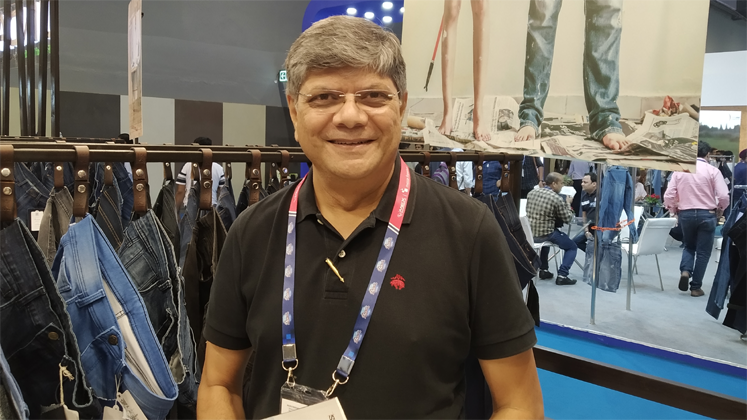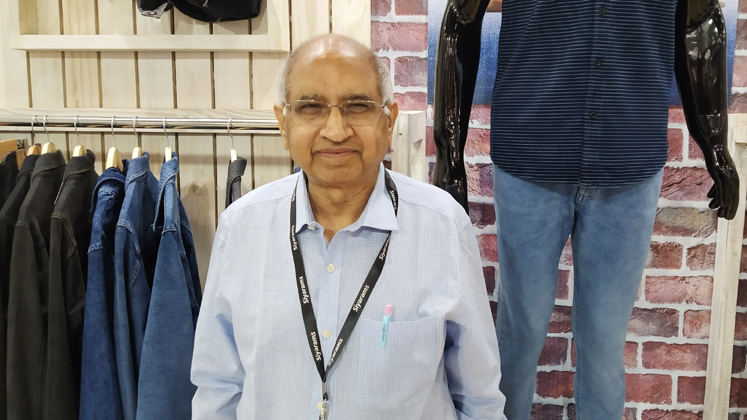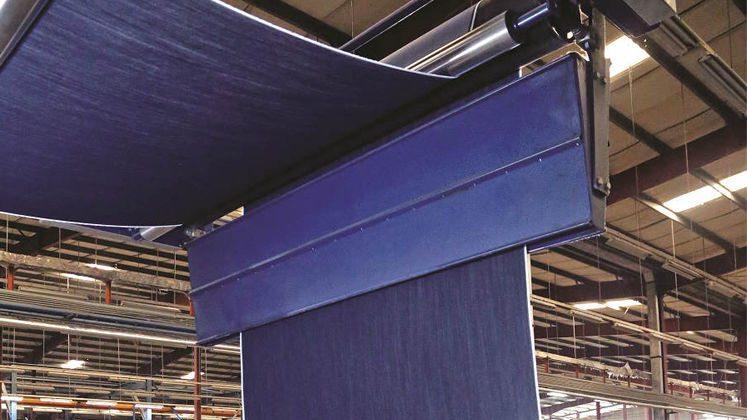As per various reports, the global jeanswear market is expected to be around US $ 128 billion by 2023 which was almost US $ 115.76 billion in 2021. It shows the massive opportunities in jeans export for garment manufacturing hubs. India’s denim production is somewhere around 1.7 billion metres per annum and around 50 per cent of it is consumed in the Indian domestic market, while 40 to 45 per cent is normally exported. Rest remains in stock or as an excess capacity available. As per Statista, India exported denim fabrics worth US $ 355 million in 2021 (third highest after China and Pakistan). Importantly, it’s been more or less the same trend for many years. Despite having strong availability of quality raw material, manufacturing know-how of jeans and globally good demand, India is lacking in jeans export.
One of the major reasons for the limited export of jeans from India is restricted manufacturing capacity as there are only few denim or even bottomwear exporters in India with good capacities. Most of the others don’t have massive set-ups like Bangladesh and China. So, top denim brands don’t have options even if they wish to source jeans from India. That’s something to think about!
Secondly, mid-level exporters that can easily cater to small or medium-level brands, importers and wholesalers are reluctant to focus on denim. They keep focusing on their core strengths – valueadded womenswear in woven and knits (majorly tops).
However, a small part of the industry is positive of bringing about a change as they have started investing in building capacity. There are enough chances that more investments may happen in jeans manufacturing considering more and more global brands are making strong presence in India and wish to source locally produced products. Importantly, Government policies too of late have been supportive towards manufacturing.
Fabric manufacturers are optimistic of India’s jeans export growth
In India, there are around 50 leading denim fabric manufacturing companies which are having decent infrastructure as well as a stronghold on quality, be it Arvind, Raymond, KG Fabriks, Kanchan Denim, Vishal Denim and many more. Leading denim fabric manufacturers Jindal Worldwide, Siyaram and RSWM, are particularly very optimistic and feel that India’s growth in jeans export can be seen in just a matter of time.

“Indian market is evolving, and more and more international retailers are having a strong presence in India. So there will be a need for organised jeans manufacturers for sure. And I don’t think that India will always be able to import from other countries to service the local markets as issues and time involved in import are not viable in the long-term. Now is the time I see that India will have large-scale capacities, initially to serve the domestic market and then obviously look at the export market,” says Aamir Akthar, Group CEO, Jindal Worldwide.
He also adds that there is great keenness to invest and those who invested earlier are running at full capacity, which is encouraging for them as well as others.
Interestingly, there are a few denim mills that are themselves investing in jeans manufacturing to avail the massive opportunities in jeans manufacturing. Cost saving and support on timely delivery, due to vertical integrated setup, also gives them an edge over others.
Mumbai-based Siyaram Silk Mills is coming up with a factory in Amravati which will be producing around a million pair of jeans per year. The plant will be dedicated to knit denim’s jeans for bottoms as well as tops. The factory, which is expected to start production within a year, is supposed to have 800 machines.

PK Acharya, Senior President of the company, tells Apparel Online, “So far our industry, especially mills, didn’t have thrust on jeans export but now mills are changing their way and along with fabric export, they are also working to increase the export of final denim products.” He further adds, “I can see that mills have understood that to get more value, they have to focus on jeans export and some of the mills have started working also on their jeans manufacturing projects.”
He is confident that looking at the current global scenario, India’s jeans and denim fabric companies will be gaining more orders.
“Though Sri Lanka is good at exports, but owing to the country’s situation, buyers aren’t too interested in it and don’t want to take risk. This will benefit India along with other countries. Bangladesh however is a different scenario. It has a lot of orders, so buyers are now thinking of shifting some orders to India,” Acharya states.
Medium-level players entering into jeans manufacturing
As far as India’s top jeans exporters are concerned, leading companies like Arvind, top apparel exporters like Shahi Exports, Ashima Group etc., too have a firm hold in jeans exports.
Shahi set up its denim division in 2010, and currently, has two denim garmenting units and a laundry with a production capacity of a million pieces per month.
When it comes to jeans or even for bottoms’ export, it is only Bengaluru that works with major brands and buyers in this segment. There is a need that established hubs of garment manufacturing should also focus on bottoms.
Semi-organised and unorganised hubs like Ahmedabad, Delhi-NCR, Bellary and Ulhasnagar are also having a reasonable share in jeans export, majorly to the countries like Middle East.
There are few middle-level companies that so far have nothing to do with denim, but the emerging opportunities have motivated them to enter into jeans manufacturing.
Bengaluru-based Smart Clothing, a leading bottomwear manufacturer, is investing Rs. 8 crore to add a new jeans factory and will have an initial capacity of 5,000 jeans per day. In the long run, it will go for washing operations also.

“Our existing clients motivated us to enter into denim segment. Our research also shows that denim is a growing segment and it will have constant demand,” says Vishal Devatha, Director of the company, who further adds that as of now, the company is working with Indian brands and in future it will also surely explore export opportunities. That is why, the upcoming denim plant by the company will be fully compliant.
Another company on similar track is Noida-based apparel exporter Vishvas International. The company, currently having 600 stitching machines for womenswear, is entering into denim segment and plans to add a new factory of 200 machines. Gaurav Goyal, Director of the company shares his motivation to enter into this segment, “There are interesting developments in denim which are quite new for the customers, be it just 2 per cent shrinkage, interesting colour range, washing effects, variety of sustainable practices. There is no issue of colour bleeding in indigo. All this encouraged us to add denim products in our product basket.”
Regarding denim tops, there is already stir in Jaipur and few of the companies have thrust on this product category, though this stir is driven by buyers, as orders of denim tops are increasing in this hub which is otherwise majorly known for women’s dresses. Local factors are also playing an important role to cater to this demand.

Having good orders in denim tops, Vimal Shah, immediate past President of Jaipurbased Garment Exporters Association of Rajasthan (GEAR) and MD, Goodwill Impex is upbeat about this product category and says, “We have little price advantage too due to various blends in denim fabric. Jaipur should have a massive growth in this segment.”
He adds, “Jaipur is making tops of 5 to 5.50 ounce denim and this is going to be a long-term focus area for our cluster. 5 to 5.50 ounce denim is easy to stitch for operators.”
Cost-competitivenessrequired
Like other products, cost-competitiveness is the main bottleneck in India’s jeans export. Factors that go against India include duty disadvantage and expensive fabric. Jeans manufacturers are of the view that overall denim mills have higher prices compared to India’s competitors, which get fabric from China or from within their country.
Indian domestic market for jeans is more about fashion and value addition while the international denim segment is still more basic, more vintage. Accordingly, for fabric, prices are high for the domestic market. With the Government’s thrust on FTA, and schemes like PLI India, India will be having the advantage of exports to countries like UAE, UK and Australia.
To increase the overall jeans export from India, there is a dire need to upgrade the infrastructure as only state-of-the-art units can have better control over costing. Buyers should have a push from India to source a complete product basket as India is manufacturing everything including jeans. Government should support laundry facilities as there are challenges on this particular front also.
Looking at the current landscape, it is high time one starts working in this direction. Yes, buyers are looking towards India, but India has to convince them that they should look at India as a jeanproducing country also.
US’ import of denim apparel is growing
From January to May ’22 period, USA sourced US $ 1.61 billion worth of denim apparel products. As per the statistics released by OTEXA, the imports got a significant boost of 40.78 per cent on Y-o-Y basis.
Overall growing market
A recent report by Technavio on the denim jeans market expects the market size to increase at a CAGR of 6.3 per cent and register an incremental growth of US $ 20.06 billion between 2021 and 2026.
Denim retailers across the globe on their toes
- Levi’s is on a mission to help consumers love their jeans for decades, not seasons, so it has launched the next iteration of its ‘Buy Better, Wear Longer’.
- With the objective to provide ‘the ultimate denim experience’, Lee and Wrangler team plans to open their first dual-concept joint denim store in Berlin.
- Swedish fashion house Acne Studios has unveiled its maiden denim personalisation service.
Leading denim mills and their capacity
| Serial Number | Company Name | Capacity (million metres per annum) |
| 1 | Jindal Worldwide | 140 |
| 2 | Arvind | 120 |
| 3 | Vishal Fabrics | 100 |
| 4 | Aarvee Denims and Exports | 85 |
| 5 | Partap Spintex | 80 |
| 6 | Nandan Denim (Chiripal Group) | 60 |
| 7 | Etco Denim | 50 |
| 8 | Raymond UCO Denim | 50 |
| 9 | Bhaskar Industries | 44 |
| 10 | Oswal Denims | 40 |
| 11 | Sudarshan Jeans | 40 |
| 12 | Suryalakshmi Cotton Mills | 40 |
| 13 | Mahak Synthetic Mills | 32 |
| 14 | Mafatlal Industries | 30 |
| 15 | Modern Denim | 30 |
| 16 | Ginni International | 27 |
| 17 | Ultra Denim | 26 |
| 18 | LNJ Denim | 25 |
| 19 | Soma Textiles & Industries | 24 |
| 20 | Century Textile and Industries | 21 |
| 21 | Kanchan India | 20 |
| 22 | Malwa Industries | 20 |
| 23 | R & B Denims | 20 |
| 24 | Anubha Industries | 20 |
| 25 | Rainbow Denim | 20 |
| 26 | Indigo Denim | 20 |
| 27 | Signet Denim | 20 |
| 28 | Lodz Denim | 20 |
| 29 | JRD Denims | 20 |
| 30 | Sri Rajlaxmi Denim | 20 |
| 31 | KG Denim | 19 |
| 32 | Super Gold Suitings | 19 |
| 33 | Blue Blends (India) | 18 |
| 34 | Future Textile Manufacturing | 18 |
| 35 | Rainbow Denim | 18 |
| 36 | Vinod Denim | 18 |
| 37 | Siddhi Weaves | 14 |
| 38 | Premo Denim Inc | 13 |
| 39 | KG Fabriks Limited | 12 |
| 40 | Ashima Group | 11 |
| 41 | Sangam Group | 8 |
| 42 | Splenora Textures | 6 |
Source: Market and Apparel Resources







